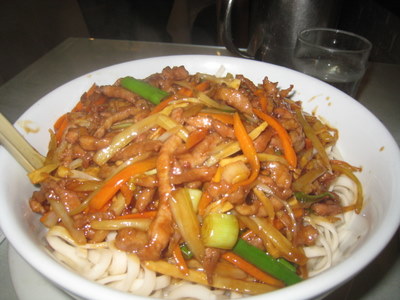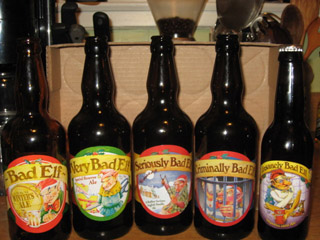 For the seven years of my life I spent in Cambridge, Mass., a significant portion of the calories I consumed came from the kitchen at the Yenching Restaurant by Holyoke Center in Harvard Square. A high perecentage of those calories came from one dish served there: Szechuan Meat Sauce Noodles. (The picture below is from my visit to Cambridge last month — the dish is still on the menu, almost unchanged, though the spice-fire seems weaker than I remember.)
For the seven years of my life I spent in Cambridge, Mass., a significant portion of the calories I consumed came from the kitchen at the Yenching Restaurant by Holyoke Center in Harvard Square. A high perecentage of those calories came from one dish served there: Szechuan Meat Sauce Noodles. (The picture below is from my visit to Cambridge last month — the dish is still on the menu, almost unchanged, though the spice-fire seems weaker than I remember.)
For $4 (almost twice as much today!) you got a small mountain of big noodles topped with a spicy shredded pork, celery and carrot mixture. The gravy would collect in the bottom of the bowl (or take-out carton) to replenish the coating on the pasta.
I loved it, and when I moved to the West Coast I missed it. So as I became more adept at Sichuan cooking — schooled by my masters, Mrs. Chiang and Fuchsia Dunlop — I began to experiment with duplicating the great Yenching Meat Sauce Noodles experience. After much experimentation, I think I’ve perfected it.
Full recipe after the jump. Have a great weekend!


